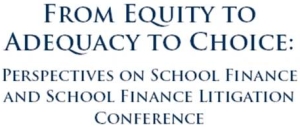 |
 |
 |
Susanna Loeb
Stanford UniversitySusanna Loeb is a member of the Center for Analysis of Longitudinal Data in Education Research (CALDER) Management Team and oversees the New York team. She is an associate professor of education at Stanford University, specializing in the economics of education and the relationship between schools and federal, state and local policies. She studies resource allocation, looking specifically at how teachers' preferences and teacher preparation policies affect the distribution of teaching quality across schools and how the structure of state finance systems affects the level and distribution of funds to districts. Dr. Loeb's papers include "Estimating the Effects of School Finance Reform: A Framework for a Federalist System," Journal of Public Economics; "Examining The Link Between Teacher Wages and Student Outcomes: The Importance of Alternative Labor Market Opportunities and Non-Pecuniary Variation," Review of Economics and Statistics; "How Changes in Entry Requirements Alter the Teacher Workforce and Affect Student Achievement," Journal of Education Finance and Policy; and "Explaining the Short Careers of High-Achieving Teachers in Schools with Low-Performing Students," and "The Draw of Home: How Teachers' Preferences for Proximity Disadvantage Urban Schools," American Economic Review and the Journal of Policy Analysis and Management, respectively. Dr. Loeb is also director of the Institute for Research on Education Policy and Practice at Stanford, co-director of Policy Analysis for California Education, an associate professor of business at Stanford and a faculty research fellow at the National Bureau of Economic Research.specializes in the economics of education, and the relationship between schools and federal, state and local policies. She studies school finance reform, and specifically how the structure of state finance systems affects the level and distribution of funds to districts. She also looks at the teacher labor market and how changing job opportunities for women college graduates affects the pool of potential teachers.